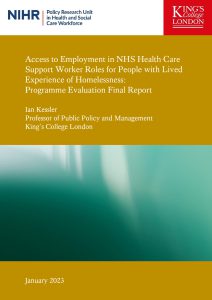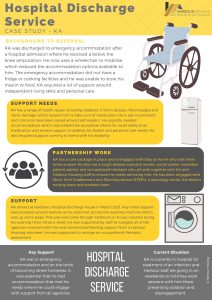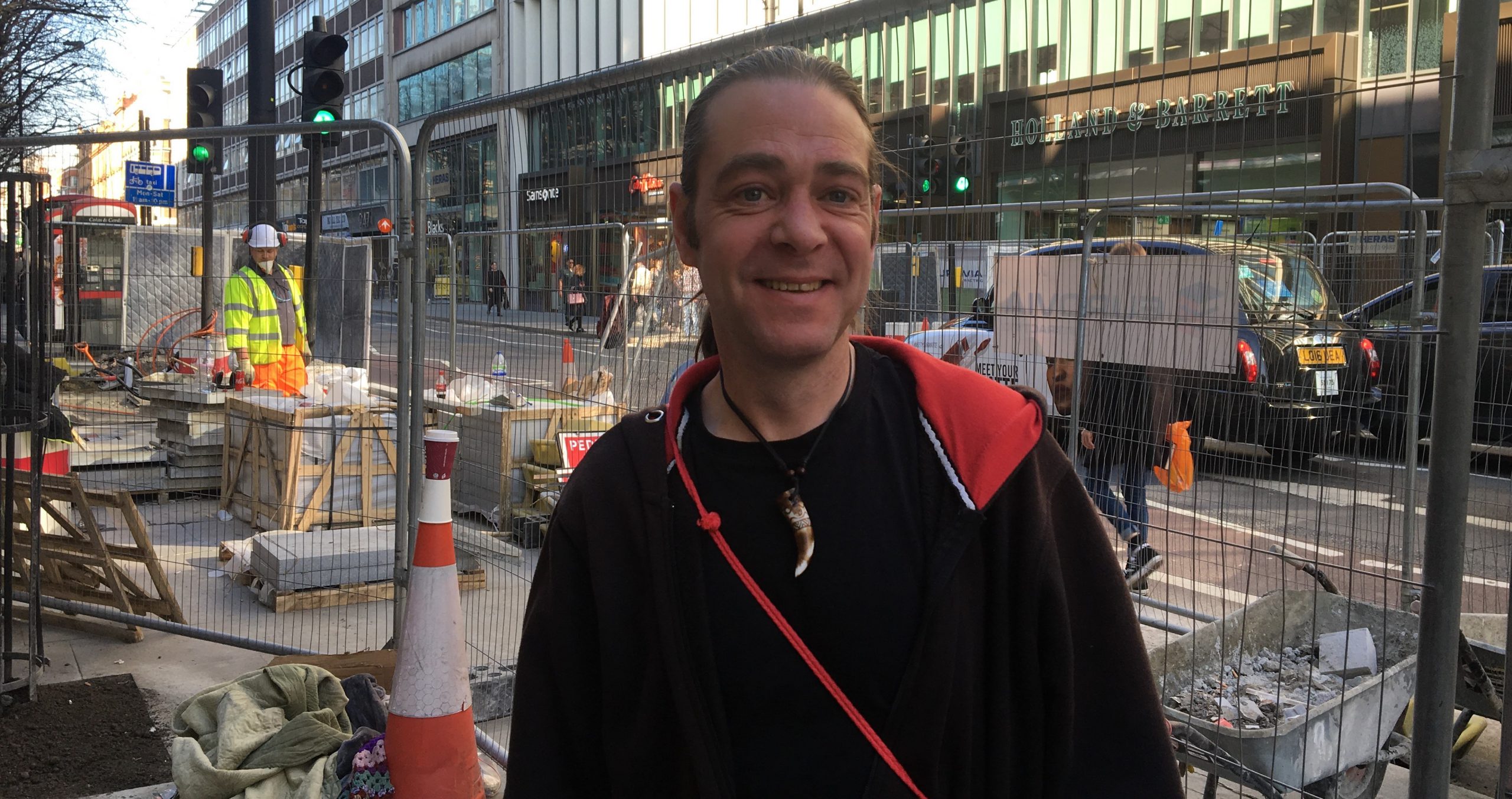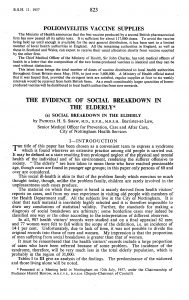Carolin Hess is a PhD student at the NIHR Policy Research Unit in Health and Social Care Workforce, King’s College London. (583 words)
 As part of the NIHR Policy Research Unit in Health and Social Care Workforce Homelessness Series, Research Fellow at the Unit, Jess Harris, and Stan Burridge (public contributor) recently presented ‘lived experience’ perspectives from the emerging findings of an NIHR School for Social Care Research funded national study of homelessness, self-neglect, and safeguarding. The event, held on 25 April, was attended by over 180 people.
As part of the NIHR Policy Research Unit in Health and Social Care Workforce Homelessness Series, Research Fellow at the Unit, Jess Harris, and Stan Burridge (public contributor) recently presented ‘lived experience’ perspectives from the emerging findings of an NIHR School for Social Care Research funded national study of homelessness, self-neglect, and safeguarding. The event, held on 25 April, was attended by over 180 people.
In light of a recent report that revealed that 1313 people died while homeless (including people sleeping rough, in emergency or other insecure settings) in the UK during 2022, an 85% increase on the number recorded in 2019, the research could not be more timely.
Bringing together the voices of multi-disciplinary practitioners and people with lived experience, the study findings highlight the complexities of safeguarding but also offer suggestions on how to strengthen safeguarding responses and more effectively support people who face multiple exclusion homelessness (MEH). Continue reading




 At the
At the 
 In this blog,
In this blog,  The first step in Harbour Housing’s response to keeping residents safe from COVID-19 was to provide everyone with an information briefing, ensuring staff had time to talk through any concerns. Video screens in the properties also relayed NHS advice about hygiene and hand washing. Washing facilities and hand dryers were installed in the entrance lobby at each building. This meant that everyone had the opportunity to wash their hands before entering the property. In addition, thermal imaging CCTV cameras were installed to read the temperature of every person entering the building. This was to ensure that symptoms could be caught early.
The first step in Harbour Housing’s response to keeping residents safe from COVID-19 was to provide everyone with an information briefing, ensuring staff had time to talk through any concerns. Video screens in the properties also relayed NHS advice about hygiene and hand washing. Washing facilities and hand dryers were installed in the entrance lobby at each building. This meant that everyone had the opportunity to wash their hands before entering the property. In addition, thermal imaging CCTV cameras were installed to read the temperature of every person entering the building. This was to ensure that symptoms could be caught early.